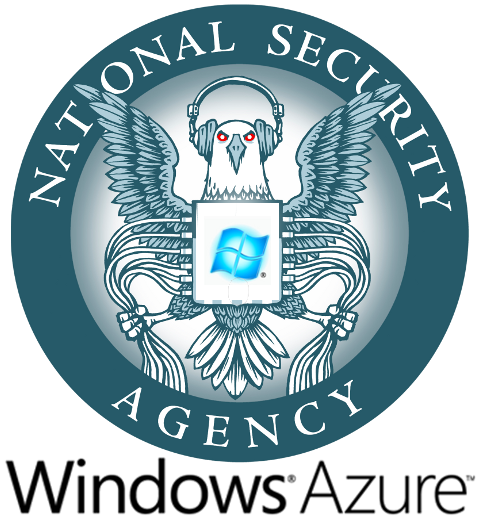12.24.13
Posted in GNU/Linux, Mandriva at 9:16 am by Dr. Roy Schestowitz
Summary: Derivatives of Mandriva are very much alive, with recent or upcoming releases
NOW, as in previous years, a new release of Mageia is imminent [1,2], promising to beat Mandriva to it [3] but not PCLinuxOS, which has just released its December edition (2013.12) [4]. Mandriva is now based in Russia and just like Red Hat (historically a relative of Mandriva) it might be benefiting from the NSA scandals. Well, governments cannot tolerate espionage and in Free/libre systems like Mandriva (with derivatives) not even KGB agents like Putin can successfully hide back doors.
For those who think that Mandrake/Mandriva are gone and are merely part of history it should be important to recognise forks and derivatives, including OpenMandriva. One day it might be a Mandriva derivative — not a RHEL or Debian derivative — that becomes the most widely used GNU/Linux distribution (or operating system). ChromeOS and SteamOS, for instance, are based on rather different systems of GNU/Linux. There’s no one-horse race. █
Related/contextual items from the news:
-
-
-
Nearly 18 months after the company was re-organised, Mandriva, the French GNU/Linux company is making progress towards a release, according to Charles-H. Schulz, its marketing and open source relations manager.
-
Permalink
 Send this to a friend
Send this to a friend
Posted in GNU/Linux, KDE at 8:52 am by Dr. Roy Schestowitz
Summary: The world’s most powerful desktop/software compilation is reaching adulthood (age 18) in 2014 and it still enjoys good momentum
NEXT YEAR KDE will turn 18. The project has matured a lot for almost a couple of decades and we now have KDE 4.12 [1], the twelfth release of KDE4. We can also take a glimpse at Plasma 2 [2], which makes GNU/Linux looks more visually attractive than any other operating systems (subjective), even the proprietary ones that are all about packaging and very little substance (yes, Apple). Kdenlive has just been revived [3] and Plasma Media Center 1.2 was released for the holidays [4], ushering good news about Akademy 2014 [5].
Of course, not everyone is entirely happy with KDE [6]. That is fine. KDE is not for everyone and it’s good that alternatives exist so that GNU/Linux isn’t the choice between KDE or nothing at all (Windows and Apple OSuX offer no alternative ‘shells’). Black Lab Linux is one of the latest distributions to have embraced KDE [7] and now we have Qt 5.2 [8] to enhance the new/prosepctive releases [9], promising a future of rapid development of both the toolkit and the applications, not just the desktop environment (KWin, KDM, Plasma, and so on). █
Related/contextual items from the news:
-
-
KDE’s Plasma Team presents a first glimpse at the evolution of the Plasma Workspaces. Plasma 2 Technology Preview demonstrates the current development status.
-
Last month I wrote how the Kdenlive project had gone dark after the KDE video editing software’s leader had gone missing. Fortunately, the maintainer is alive and well and there’s renewed hope for new developments within Kdenlive.
-
The KDE community has a Christmas gift for you! We are happy to announce the release of KDE’s Plasma Media Center 1.2—your first stop for media and entertainment created by the Elves at KDE. Plasma Media Center is designed to provide an easy and comfortable way to watch your videos, browse your photo collection and listen to your music, all in one place. This release brings many refinements and a host of new features, making consuming media even easier and more fun.
-
Where is the next Akademy? In Czech, “KDE je příští Akademy?” as ‘kde’ means ‘where’ in Czech.
-
I switched back to KDE a couple months ago, and low and behold, the very same problem that released my inner crybaby in 2009, 2012 and even a month ago is still plaguing KDE today. Like Gnome, KDE has a dedicated search tool. Just as Gnome has Gnome Search Tool, KDE has Kfind.
There’s only one problem. Kfind Ksucks.
I’ve played with about every setting you can imagine in Kfind, from the funky default file string to the box that says “use indexing.” It gives me nothing. Nada. Zip. Ziltch.
-
-
The KDE Community is proud to announce the latest major updates to KDE Applications delivering new features and fixes. With Plasma Workspaces and the KDE Platform frozen and receiving only long term support, those teams are focusing on the technical transition to Frameworks 5.
-
Permalink
 Send this to a friend
Send this to a friend
Posted in GNU/Linux at 8:28 am by Dr. Roy Schestowitz
Summary: Diversity of desktop environments is evidently on the rise, with corporate backers driving some of it
2013 was a fantastic year for GNU/Linux, not just in portable devices but also on desktops. SteamOS is an example of desktop GNU/Linux becoming a gaming powerhouse, breaking down a long-lasting barrier to adoption.
When it comes to desktop environments, there have been some “distinct developments” [1] and (re)introduction of more diversity, such as MDM [2]. Towards the end of this year we also get acquainted again with Enlightenment [3-5], a truly beautiful desktop environment that has been getting some corporate backing in recent years. Finally, there’s also LXLE [6], which shows that innovation and exploration of new routes should not be considered a thing of the past. A lot of companies build proprietary systems on top of GNU/Linux now (especially but not only in portable devices), adding to the diversity in a less transparent way.
2014 will almost definitely be another big step forward for desktop GNU/Linux. █
Related/contextual items from the news:
-
The year 2013 had its own distinct developments, but most of what happened in the last twelve months were continuations of events that were already happening. It was a year of continued development, of trends reaching natural conclusions, rather than of new ones beginning.
Whether you are looking at crowdfunding, games, the continued efforts of Ubuntu or GNOME, women in computing, or the new innovations at open hardware, the impression of 2013 remains the same. You could almost call it 2012, Part 2, except that many of the continuing stories began even earlier.
-
The MDM display manager was introduced for the release of Linux Mint 13. Though MDM was forked from GDM, the list of features is far more extensive. This display manager supports different greeters, each with their own stylish set of themes. I wanted to show off some of these awesome themes, so here they are for your enjoyment.
-
-
Terminology, the terminal emulator for the Enlightenment desktop built atop their EFL libraries, is up to version 0.4 and it’s landed heavy with new features.
-
Many major things have happened to EFL in the past year since EFL 1.7 first came out. The usual has been done in fixing bugs, optimizing speed and memory footprint, and much much more. These are just some hilights of what has been done since 1.7, so don’t take this as a complete list. Take a look at the NEWS files for more expansive information if you want that.
-
Permalink
 Send this to a friend
Send this to a friend
Posted in GNU/Linux, Red Hat, Servers at 8:09 am by Dr. Roy Schestowitz
Who said US businesses are suffering?
Summary: Red Hat’s revenues soar after half a year of important revelations about the NSA
A LOT of the corporate press in the US wrongly paints the NSA disclosures as a killer to US technology companies, perhaps conflating “US” with “proprietary”. Well, many companies in the US are adhering to Free/Open Source doctrines and they aren’t doing too badly, even amid the NSA scandals. Despite them or because of them, those companies are doing well. Those companies hardly seem to have been affected by 'standards' with back doors in them.
Enter Red Hat.
While Red Hat’s nation of origin makes it somewhat difficult to trust patches it submits to Linux on behalf of the NSA, south/Latin America sure buys a lot of RHEL. The code is out there for auditing and even compilation by oneself. There is no known back door in RHEL. Some may speculate about hardware-level back doors or even random number generators with too low an entropy, but none of this is confirmed, just hypothesised. The US Department of Defence uses/deploys a lot of Red Hat, so why would the NSA put a back door in ‘vanilla’ RHEL (China is alleged to have been doing so in derivatives of RHEL).
Putting aside hypotheses, Red Hat is doing well [1] and its profits surge [2], with a 15% increase in revenues [3]. RHEL7 (Red Hat Enterprise Linux 7) is already looking quite promising [4]. The company, Red Hat, is liaising with OpenStack [5-10] amongst other partners and for those who cannot afford Red Hat there is CentOS 6.5 [11], which has just received a positive review [12].
Techrights has been running on CentOS for quite a few years, enjoying the work of Red Hat and also the low cost (we are hardly funded by anyone, except a few donations that we appreciate a lot). Back doors in proprietary software will hopefully convince more and more nations — let alone businesses — to explore GNU/Linux servers, desktops, and more. The price of freedom/autonomy/privacy is misunderstood by too many. █
Related/contextual items from the news:
-
-
Enterprise Linux vendor Red Hat posted strong financial results for the third quarter of its fiscal 2014 on Thursday, with earnings that beat both analysts’ estimates and the company’s own earlier guidance.
Revenues for the quarter ending on November 30 were $397m, up 15 per cent from the same period a year ago.
-
Red Hat, an icon of open source business, reported $397 million as total revenue for the quarter. It’s an increase of 15% in U.S. dollars from the year ago quarter.
-
Red Hat this week released the first beta to Red Hat Enterprise Linux 7. RHEL 7 is based upon improvements and other work that happened over the past few release cycles in Fedora (Red Hat says it’s Fedora 19-based but in developer comments it turns out to be a mix of 18/19/20) and is riding on its new enterprise Linux 3.10 kernel. In this article is a first look at RHEL 7 Beta 1 along with our first benchmarks of Red Hat Enterprise Linux 7 comparing the results to Red Hat Enterprise Linux 6.5.
-
-
-
-
-
-
-
-
CentOS firmly sits in the stable category of Linux releases – packages are rarely the the very latest versions, the kernel used is much older and it even still has GNOME 2 as its desktop environment, all in the name of cutting down on bugs. While it is stable and capable of running on older tech, it isn’t as resource friendly as distros specifically geared towards being lightweight. Especially if you pick up the full DVD image of the distro, clocking in at nearly 2 GB, which carries multiple desktop environments and a lot of default apps.
Permalink
 Send this to a friend
Send this to a friend
Posted in Red Hat at 7:45 am by Dr. Roy Schestowitz

Summary: Fedora 20 receives positive reviews, but the upgrade process from Fedora 19 to Fedora 20 is allegedly “broken”
Fedora 20 was released one week ago [1,2], as we noted before. It looks nice and it comes in many 'flavours'. It lacks all sorts of proprietary software which some people insist on adding (post-installation) [3] and it has already received good reviews [4] and benchmark analyses [5]. Red Hat staff wrote about Fedora on behalf of Linux.com [6], but one writer criticises technology publications of ignoring a “broken” upgrade process [7,8]. The author of the original article has a decent track record and no known hostility towards Fedora, so the accusation may be legitimate and well-researched. Even years ago it was common to hear of people (mostly in support forums) disappointed with the Fedora upgrade process, arguing that it had rendered their system/s unusable.
After 10 years of using Fedora (on and off) I can warmly recommend it. When it comes to upgrades, however, be careful. A defunct machine can be the opposite of a Christmas gift. I recently struggled with many hardware issues that ruined my month. █
Related/contextual items from the news:
-
-
-
-
If you want to a bleeding edge desktop or server Linux, then Fedora is the Linux distribution for you. If you want to play it safe, try something else.
-
Published today are benchmarks from two Intel systems comparing the performance of Fedora 19 “Schrödinger’s Cat” to Fedora 20 “Heisenbug” for various workloads. Especially for those using open-source graphics drivers, Fedora 20 can be worth the upgrade for performance reasons.
-
It’s been a long time coming, but the Fedora 20 “Heisenbug” release brings ARM to equal status in Fedora with x86 and x86_64 releases. The Fedora 20 release, out just more than a month after the 10th anniversary of the first Fedora release, now boasts ARM as a primary architecture.
It’s not the first release to actually support ARM, but prior to Fedora 20 the ARM support was not considered a blocker for release or necessarily going to receive updates at the same time as its x86/x86_64 brethren.
-
Upgrading to Fedora 20, the version of Red Hat’s community Linux distribution released this week, from version 19, at least, is broken and this fact does not seem to have been disseminated to many tech publications that have written about the release.
-
It’s been an interesting day in the Linuxhood today. Sam Varghese posted that Fedora’s upgrade is broken and that no one is reporting it, while Jamie Watson published a 16-page Anaconda walk-through. The Motley Fool gave a recap of Red Hat positions ahead of their quarterly earnings report expected Thursday. The Red Hat Blog teased of upcoming articles highlighting Red Hat 7 features. And Red Hat is the 23rd best place to work.
Permalink
 Send this to a friend
Send this to a friend
Posted in DRM at 7:29 am by Dr. Roy Schestowitz
Summary: A reasonably new project strives to make the Web a binary conduit of DRM-laden ‘content’, even for GNU/Linux users
MICROSOFT has already given up on Silverlight — its attempt to establish lock-in on the Web (worse than ActiveX) which was aided by another defunct project from a Microsoft MVP and mole. This has not, however, totally eliminated the efforts to pollute the Web with DRM, binary extensions, etc. Some project called Pipelight is trying to put Microsoft Silverlight right inside GNU/Linux. “A proposal has been submitted for having Microsoft Silverlight plug-in support in Ubuntu 14.04 LTS as part of the main archive via the Pipelight project,” Michael Larabel writes. “Previous to that there was work in 2012 for a patched version of Wine to get Netflix on Linux.”
This project which is run by Erich Hoover, Michael Müller, and Sebastian Lackner is not helping GNU/Linux. It is not a good thing. Netflix, which is closely connected to Microsoft, does a horrible thing by promoting DRM on the Web (even at standardisation level) and Microsoft is fighting against the open Web. We need to reject this, not become ‘compatible’ with it. █
Permalink
 Send this to a friend
Send this to a friend
Posted in Finance, Microsoft at 7:12 am by Dr. Roy Schestowitz
The firm which helped Microsoft and the NSA scoop a European company, Skype

Summary: Microsoft’s Peter Klein moves into a company mostly owned by Silver Lake, which is a known Microsoft proxy
IN AN article from yesterday, filed under “Revolving Door”, Microsoft’s mysterious financial situation is explained as follows, by showing which door is revolving for Microsoft’s CFO whom Microsoft paid a lot of money to keep quiet: “The talent agency plans to announce on Monday that it has hired Peter Klein, who served as Microsoft‘s chief financial officer until June, as its finance chief, effective immediately. When its $2.4 billion takeover of IMG Worldwide is completed, Mr. Klein will be the C.F.O. of that agency as well.”
Here is the interesting part: “He had become acquainted with Silver Lake when Microsoft bought Skype from the investment firm, and later when the software behemoth agreed to help support Silver Lake’s takeover of Dell.
“Silver Lake executives, including its senior deal maker, Egon Durban, first broached the idea of bringing Mr. Klein into the William Morris Endeavor fold earlier this year, according to people briefed on the matter. (Silver Lake already owns a 31 percent stake in the agency, and will own about 51 percent of the combined William Morris Endeavor and IMG.)”
For those who cannot recall Silver Lake’s connection to Microsoft (it is not just Skype), revisit our many old posts about it. █
Permalink
 Send this to a friend
Send this to a friend



















 Content is available under CC-BY-SA
Content is available under CC-BY-SA